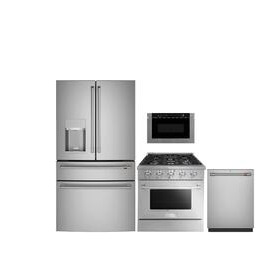How to choose the right stove for the home?

Winter is on its way! Before the winter sets in, one of our primary worries is selecting a heating system for our houses. Therefore in this post, we explain all you need to know about choosing the best stove for each setting. your residence
There are many various kinds and models of stoves, each with distinct capacities and functions that adapt to the demands of each room in the house. As a result, we've compiled a list of factors that might assist you in selecting the best heating system.
How to choose a stove for the home?

Before purchasing any item, you should first analyse your home's requirements and, based on those demands, establish the qualities and budget of your next buy. As a result, we've prepared a few questions to assist you with this initial stage.
In which room of the house will I install the stove?

When deciding on the best sort of stove for your house, consider the surrounding surroundings. One of the most significant variables is the size and amount of ventilation of each area; for example, for tiny bedrooms, a modest electric heater is perfect. A stove with a bigger capacity, on the other hand, is required in large living rooms or huge places with a lot of airflow.
What type of ventilation do you have in the home environments?

Because certain kinds of stoves, such as those that use gas or paraffin, need regular ventilation of the atmosphere to minimise the buildup of harmful gases produced during burning, air circulation in the room is critical.
Stoves should not be used in humid areas with poor ventilation, such as bathrooms, kitchens, or areas with minimal air movement. In these sorts of rooms, utilise electric or oil heaters for brief periods of time if required.
Types of stove

If you're searching for a heater to keep your home warm, we'll go through the many kinds of stoves available for different areas of the house.
Gas stoves
Because they create heat via the combustion of gas, gas stoves heat rooms quicker than electric heaters. They are perfect for vast rooms that need continual ventilation to avoid the buildup of hazardous gases. It is also not suggested for usage in compact or enclosed spaces.
Outdoor stoves
They're perfect for creating a welcoming ambiance on terraces, patios, and other outside areas. Depending on the manufacturer's instructions, outdoor gas heaters may be operated by liquid gas or natural gas. These stoves heat the atmosphere rapidly and effectively, but keep in mind that since they are used outside, the materials used to construct them must be weather resistant.
Electric stoves
These stoves provide clean heat, do not emit scents, and do not emit any pollution that is damaging to one's health. Furthermore, they are simple to carry from one location to another, making them ideal for compact spaces.
Furthermore, electric stoves are safer than stoves that utilise gas or wood combustion since they do not emit hazardous fumes and just need an electrical connection, making them perfect for use in homes with children.
Convection stoves
It's perfect for tiny places. These warmers are simple to set up and travel, as well as very safe. Convection stoves provide a natural circulation of hot air that is uniformly dispersed around the room and radiate heat rapidly.
Halogen and infrared heaters
Halogen or infrared stoves employ a non-toxic heating technique that does not produce harmful fumes. These heaters emit heat directly and focussed, making them perfect for usage in tiny places.
Fan heaters
The fan heaters contain an electrical resistance that raises the air temperature when heated, as well as an internal fan that disperses a stream of hot air into the surroundings. These electric heaters are ideal for small to medium sized rooms since they are compact and simple to travel.










